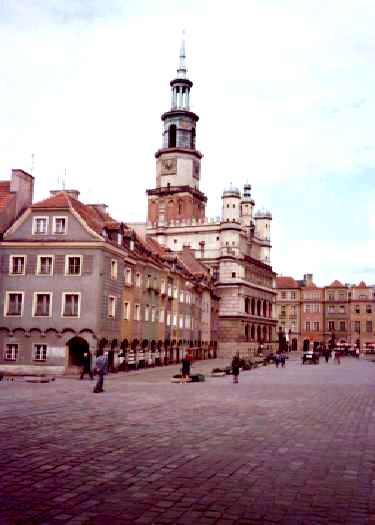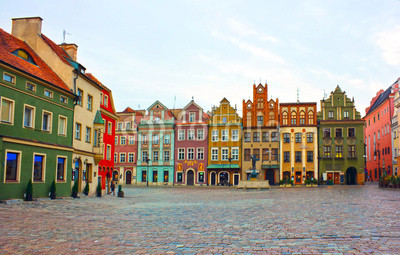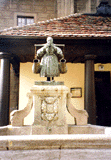Must-See Poznan Sights
Town Hall
Look up when you view the Town Hall and you might see the two mascots of Poznan butting heads. Originally Gothic, the Hall owes its current look to the Italian designer Battista who touched it up in the 16th century.
|
Market Square
If you're looking at the Town Hall, you've found the Market Square. Destroyed in WWII and rebuilt since, it serves as an excellent example of what a town square should be.
|
Dzialynski Palace
Don't leave the Square without enjoying the immense palace on its western side which nursed Polish culture along under the Partitions.
|
Raczynski Library
Liberally donated by Count Raczynski to the city of Poznan, this Louvre-look-alike library elegantly borders Plac Wolnosci.
|
Bamberta Last but not least, take a dip from the well of Bamberta. | |
A strategic location never hurt a city's growth, and Poznan is no exception. Its origins stretch back to the beginning of the nation: the man who brought Poland into being with his baptism - Mieszko I - underwent the ceremony in Poznan. Following that momentous event, the city went on to become one of the two strongholds of the new Polish nation. While the other - Gniezno - weakened after the move south to the new capital of Krakow, Poznan strengthened as it took on capital status of its own. Now the center of the Wielkopolska region, it grew as a religious and commercial city. That growth increased when the Teutonic Knights departed Poland, and again when the Hanseatic League declined. But like the rest of the nation, Poznan then suffered terribly with the Swedish invasions in the mid-17th century, and then lost its Polish name completely when incorporated into Prussia under the Partitions.
Yet the change remained only skin-deep. Despite Prussian efforts to germanize the newly-christened Posen, the population continued to consider itself Polish and acted on that belief near the end of WWI. In 1918, Posen rose up and forced out its German rulers, voting with their arms to reinstate Poznan as a Polish city. It quickly acted on its new freedom, establishing a university in 1919 and a trade fair in 1921. The fair became so successful (partially due to Poznan's fortunate location on the road which begins in Paris and ends in Moscow, hitting all the major capitals in between) that Poznan is now inundated with them.